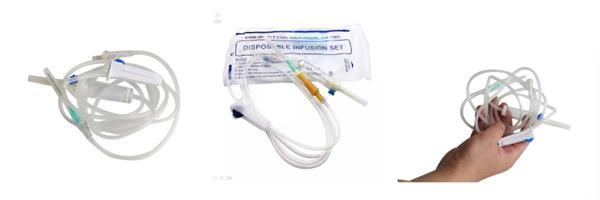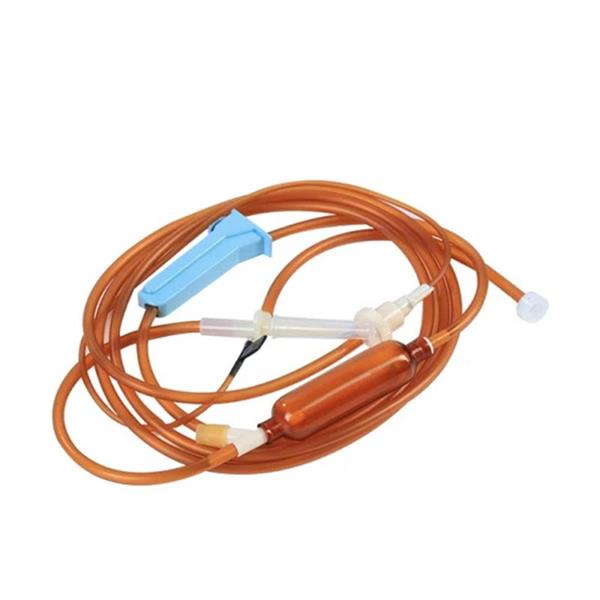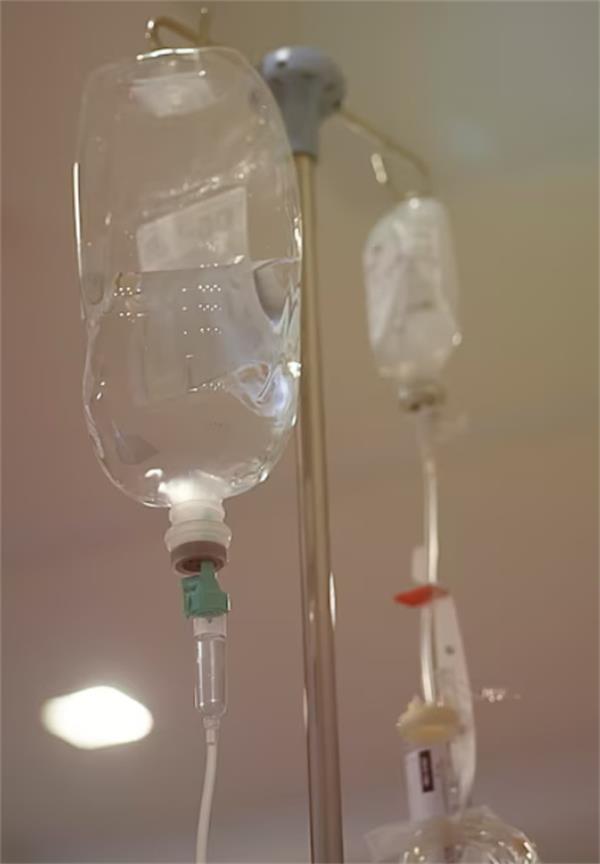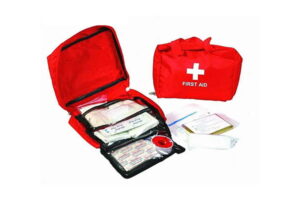In medical care, infusion sets play a pivotal role in administering fluids to patients, aiding in the safe and precise delivery of medications or solutions to support their path to recovery. These devices establish a sterile conduit between veins and therapeutic liquids, contributing to intravenous therapy. The market boasts diverse infusion sets, each designed to cater to specific medical requirements.
Now, let’s delve deeper into the intricate world of infusion sets, exploring the varied types and their unique attributes in our comprehensive guide.

Disposable Medical Infusion Sets
Disposable Medical Infusion Sets stand as one of the most widely utilized medical devices in clinical settings, prized for their affordability and extensive applications. These sets typically employ fiber filters with a pore size of approximately 15μm, making them cost-effective yet versatile. However, their drawback lies in the relatively large pore size, leading to lower filtration efficiency. Additionally, when exposed to acidic or alkaline medications, the fiber filter may shed particles, forming insoluble microparticles that can potentially cause capillary blockages and trigger infusion reactions. Consequently, caution is advised when employing standard infusion sets with strong acidic or alkaline drugs.
The conventional disposable infusion set undergoes aseptic processing before deployment, establishing a sterile connection channel between veins and medicinal fluids. Comprising components such as a venous needle, protective cap, infusion tubing, drug solution filter, flow regulator, drip chamber, bottle spike, and air filter, these sets are prevalent among disposable medical consumables.
In practice, healthcare professionals must conduct a thorough check of the infusion set’s disinfection validity and packaging integrity before use. Upon verification, the tapered end of the infusion bottle is hung on the infusion stand, aligning the tubing to hang freely. The flow regulator is closed, and the sterilized needle is inserted into the patient’s vein. Once securely in place, the tourniquet is released, and the flow rate is adjusted to ensure a smooth and controlled administration of the infusion. This meticulous procedure underscores the importance of adhering to proper protocols for the safe and effective use of disposable medical infusion sets in clinical settings.

Disposable Opaque Light Proof Infusion Set
The Disposable Opaque Light Proof Infusion Set, crafted from medical-grade light-shielding materials, addresses a critical concern in clinical practice. Certain medications, due to their unique chemical structures, are susceptible to complex reactions such as ring cleavage, rearrangement, hydrolysis, polymerization, and oxidative isomerization when exposed to light during the infusion process. These reactions can lead to discoloration, precipitation, diminished drug potency, and even the formation of toxic substances, posing potential harm to the patient’s health. Hence, it becomes imperative to exercise caution by employing light-proof infusion sets when administering light-sensitive medications.
During the infusion process, different drugs exhibit distinct requirements based on their nature. Drugs such as anticancer agents, nitroprusside for lowering blood pressure, vasodilators, water-soluble vitamins, and certain fluoroquinolone antibiotics are particularly sensitive to light and require light-proof infusion sets. This precautionary measure aims to optimize patient treatment outcomes and minimize the risk of adverse reactions stemming from drug degradation.
Disposable Opaque Light Proof Infusion Sets typically possess two key characteristics:
a. Light-Shielding Performance: The outer layer of these sets is commonly composed of light-shielding polyvinyl chloride (PVC) materials, effectively blocking light and ensuring that the medication within the infusion bottle remains shielded from unnecessary exposure.
b. Compatibility with Medications: The inner layer of these infusion sets is typically made of standard polyvinyl chloride (PVC). However, for medications incompatible with PVC, such as nimodipine, alternative materials like polyethylene (PE) infusion sets should be utilized to guarantee the safe administration of the medication.

Features of Disposable Opaque Light Proof Infusion Set:
The primary materials include an inner layer of polyurethane (TPU), an intermediate layer of light-shielding PVC, and an outer layer of PVC, employing a three-layer coextrusion process. The light-shielding range spans from 290nm to 450nm, with efficiency far exceeding national standards. The set is equipped with a standard drug solution filter (15μm) and precision drug solution filters (1.2μm, 2.0μm, 3.0μm, 5.0μm).
Usage Precautions for Disposable Opaque Light Proof Infusion Sets:
Medication Identification: Before using the infusion set, nurses and healthcare professionals must accurately identify the light-shielding level of the medication to determine the need for a light-proof infusion.
Unified Use of Light-Shielding Bag and Infusion Set: To ensure the effectiveness of light shielding, both the light-shielding bag and infusion set should be used in tandem. Using only one may not provide sufficient light-shielding effects.
Control of Indoor Lighting: Avoid excessive sunlight exposure to infusion bottles by minimizing large windows in the infusion area. Proper control of indoor lighting helps ensure the effectiveness of light shielding.
By adhering to these guidelines, healthcare providers can enhance the safety and efficacy of administering light-sensitive medications through Disposable Opaque Light Proof Infusion Sets.

Disposable Precise Filter Infusion Sets
The Disposable Precise Filter Infusion Sets represent an innovative mechanical device capable of finely controlling the infusion rate, ensuring the accurate administration of liquids within a range of 1-70 drops per minute, corresponding to a fluid volume of up to 300ml/h. Designed for use in advanced ward settings, these sets offer meticulous control over the continuous flow of nutrients in high-level ward nutrition and the intravenous administration of specific medications. In clinical practice, the precise regulation of infusion rates caters to patients’ demands for accuracy and stability in fluid delivery, meeting the stringent requirements for both nutrition and certain specialized drug infusions. Additionally, the advanced filtering capabilities of the precision infusion set contribute to more effective removal of impurities from the medication, thereby reducing potential harm to the patient.
The Disposable Precise Filter Infusion Sets employ a high-precision filtering mechanism capable of capturing particles with a diameter as small as 5μm. This design ensures excellent filtration precision and minimizes the risk of foreign particle detachment, effectively reducing local irritation and preventing the occurrence of venous inflammation. The filtration membrane used is a nuclear pore membrane, featuring a dual-layered filtering medium with strong particle retention capabilities, regular pore distribution, and minimal drug adsorption.
This set proves particularly suitable for a diverse patient population, including children, the elderly, cancer patients, cardiovascular disease patients, critically ill individuals, and those requiring prolonged infusion therapy.

With needle specifications ranging from 0.45mm to 1.2mm, the Disposable Precise Filter Infusion Sets are versatile and adaptable to different clinical needs. The primary material is a medical-grade thermoplastic elastomer (TPU), ensuring both safety and flexibility. Equipped with a precision drug solution filter (5.0μm), these sets come with automatic air expulsion and automatic liquid stop functions, enhancing the overall user experience. Optional accessories, such as venous infusion needles, further contribute to the versatility and convenience of these infusion sets.
In summary, the Disposable Precise Filter Infusion Sets offer a reliable and efficient solution for clinicians seeking precise control over infusion rates while prioritizing patient safety and comfort. With their advanced filtration capabilities and adaptable specifications, these sets represent a valuable tool in delivering optimal care across various medical scenarios.

Disposable Fine-Tuning Infusion Set
The Disposable Fine-Tuning Infusion Set, commonly referred to as a one-time-use micro-adjustable infusion device, is a specialized product designed for precise regulation of medication flow. This infusion set stands out for its innovative flow regulator, allowing healthcare professionals to fine-tune and control the medication flow with precision. By harnessing this micro-adjustment capability, the infusion set optimizes the therapeutic effects of medications while minimizing the risk of adverse reactions resulting from excessive fluid administration.
Tailored for the meticulous adjustment of medication flow, this infusion set leverages a state-of-the-art regulator to achieve accurate and controlled liquid delivery. This not only enhances the efficacy of the administered medication but also addresses the critical need to minimize the potential negative impact of over-infusion on the human body. The disposable nature of this fine-tuning infusion set adds an extra layer of convenience, eliminating the need for intricate cleaning and sterilization processes between uses.

Disposable Infusion Sets with Burette
The Disposable Infusion Sets with Burette are specially designed for situations that demand precise control over infusion dosage, featuring a calibrated burette for accurate measurement. Comprising components such as a bottle spike puncture protector, bottle spike puncture device, injection attachment, graduated burette, flow control valve, drip chamber, drug solution filter, air filter, tubing, and flow regulator, these sets are particularly suited for pediatric infusions and scenarios requiring meticulous control of fluid volume.
Available in varying capacities, including 50mL, 100mL, and 150mL, these infusion sets with burette offer flexibility to cater to diverse medical requirements. With needle specifications ranging from 0.45mm to 0.9mm, healthcare professionals can choose the appropriate size to ensure safe and effective infusion.
The key features of the Disposable Infusion Sets with Burette include their primary construction material, polyvinyl chloride (PVC), and a 15μm drug solution filter. These sets facilitate quantitative fluid delivery, with an error margin of ≤4%, ensuring the precision required in medical applications. The inclusion of a liquid stop function adds an extra layer of safety. Additionally, these infusion sets can be complemented with optional accessories such as clamps for starting and stopping the flow, latex tubing, connector protective caps, and venous infusion needles, providing healthcare providers with a versatile and comprehensive solution.
The calibrated burette in these infusion sets plays a crucial role in delivering accurate and controlled fluid volumes. This makes them well-suited for pediatric patients and situations where precise dosages are critical. The use of PVC as the primary material ensures the sets are durable, yet flexible, meeting the demands of various medical applications. The drug solution filter further enhances the safety and purity of the administered fluids.
In summary, the Disposable Infusion Sets with Burette offer healthcare professionals a reliable and efficient tool for delivering precise and controlled infusions. Their versatile specifications and safety features make them an ideal choice for scenarios where accurate measurement and dosage control are paramount, contributing to the overall quality and safety of patient care.

The Bottle-Type and Bag-Type Infusion Sets
The Bottle-Type and Bag-Type Infusion Sets are essential tools for administering intravenous medications to patients requiring large dosage volumes, primarily used for infusion purposes. These sets are designed for delivering medications through intravenous infusion, with the main focus on volumetric administration. Available in various specifications, including 100ml, 150ml, 200ml, 250ml, 300ml, 350ml, and 400ml, they cater to the diverse needs of patients requiring higher medication doses.
Constructed primarily from polyvinyl chloride with DEHP plasticizer, the Bottle-Type and Bag-Type Infusion Sets feature a standard drug solution filter with a 15μm filtration capacity. These sets are characterized by their quantitative infusion capabilities, ensuring accurate and controlled medication delivery. The clear and precisely printed scales contribute to ease of use, with an error margin of ≤4%. Optional accessories, such as clamps for starting and stopping the flow, latex tubing, connector protective caps, and venous infusion needles, enhance the versatility and convenience of these infusion sets.

The bottle-type and bag-type designs cater to different preferences and clinical requirements. The polyvinyl chloride construction with DEHP plasticizer ensures the flexibility and durability of the sets, accommodating the demands of various medical applications. The infusion sets also feature a user-friendly drug solution filter, enhancing the purity and safety of the administered medications.
In summary, The Bottle-Type and Bag-Type Infusion Sets stand as indispensable tools in healthcare, providing healthcare professionals with a reliable means of administering intravenous medications accurately and safely. Their versatility in specifications and compatibility with optional accessories make them well-suited for a range of clinical scenarios, ensuring the efficient delivery of medications to patients requiring larger dosage volumes.
Unveiling the Difference: PVC vs. TPE Disposable Infusion Sets
In the realm of disposable medical polymer consumables, most one-time-use infusion sets in China are crafted from Polyvinyl Chloride (PVC). However, recent literature highlights concerns regarding PVC infusion sets, citing their tendency to adsorb certain medications, potentially diminishing clinical efficacy. Additionally, the leaching of plasticizers, such as Di(2-ethylhexyl) phthalate (DEHP), from PVC poses potential health risks.
In response to these concerns, there has been a recent development in Thermoplastic Elastomers (TPE) infusion sets. TPE, a polyolefin thermoplastic elastomer, lacks unsaturated double bonds, offering excellent stability and aging resistance. Importantly, TPE does not contain polar groups or ester-type plasticizers, eliminating the issues of medication adsorption and plasticizer migration associated with PVC. This enhances the compatibility of TPE infusion sets with various medications.
While PVC has been the traditional material for crafting infusion sets, the emergence of high-performance polyolefin thermoplastic elastomers (TPE) is considered a safer and more advanced alternative for producing one-time-use infusion sets. The transition to TPE addresses concerns related to medication adsorption and plasticizer migration, paving the way for safer and higher-performing disposable infusion sets.
In conclusion, understanding the distinction between PVC and TPE infusion sets is crucial for healthcare practitioners and consumers alike. This shift in materials reflects ongoing efforts in the medical industry to enhance safety and performance, ensuring that disposable infusion sets meet regulatory standards and contribute to improved patient outcomes.

Crucial Precautions When Using Infusion Sets
In medical care, the utilization of infusion sets demands meticulous attention to ensure the safety and efficacy of fluid administration. Here are vital precautions to observe when using infusion sets:
Gravity Infusion Only: Infusion sets should exclusively be employed for gravity-driven infusions, ensuring a controlled and steady flow.
Strict Rejection of Damaged Products: In instances of product failure or compromised packaging, it is strictly prohibited to use the infusion set, emphasizing the importance of product integrity.
Single-Use Principle: Infusion sets are designed for one-time use only. Once unsealed, they should be promptly utilized and subsequently discarded to prevent the risk of contamination or compromised sterility.
Drop Calibration Awareness: Recognizing that 20 drops of distilled water are equivalent to 1ml (±0.1ml) underscores the precision required for accurate fluid administration.
Temperature Consideration: Infusion sets are best suited for use within the temperature range of 10 to 40℃, ensuring optimal performance and safety.
Storage and Transportation Vigilance: Proper storage and transportation demand protection against moisture, heat, sunlight, and pressure to maintain the quality and efficacy of the infusion sets.
Adhering to these precautions not only safeguards patients from potential risks associated with improper infusion practices but also ensures healthcare providers deliver fluid therapy with the utmost precision and safety.

Mastering the Art of Proper Infusion Set Usage
In healthcare, the correct utilization of infusion sets is paramount to ensure safe and effective administration of fluids. Here’s a step-by-step guide on how to appropriately use an infusion set:
Pre-Use Inspection: Before use, meticulously inspect the packaging for any signs of damage and check whether the protective sheath is intact. If there are any compromises, refrain from using the infusion set.
Preparation Steps:
Close the flow regulator.
Remove the puncture protector.
Insert the puncture device into the infusion bottle.
Open the air inlet cap (or insert the air needle).
Fluid Entry:
Invert the infusion bottle.
Squeeze the drip chamber with your hand, allowing the medication to fill approximately halfway into the chamber.
Setup for Infusion:
Release the flow regulator.
Position the drug solution filter horizontally.
Eliminate any remaining air by allowing it to escape through the filter, initiating the infusion process.
Needle Attachment: Before use, ensure that the infusion needle connector is securely inserted to prevent any potential leakage.
Professional Oversight: Infusion procedures should be executed and supervised by trained healthcare professionals to guarantee precision and safety throughout the process.
By following these straightforward steps, healthcare providers can ensure the proper and safe usage of infusion sets, contributing to the delivery of high-quality patient care.

Common Adverse Events with Infusion Sets
In the realm of healthcare, the use of infusion sets, while integral, may be marred by various adverse events stemming from product quality issues or insoluble particulates. Here’s an exploration of the common adverse events associated with infusion sets:
Adverse Events:
Rupture: Infusion sets may experience breakage during use, compromising their functionality and potentially leading to unintended consequences.
Leakage: Improper sealing or damage to the infusion set may result in the leakage of fluids, posing a risk to both patients and caregivers.
Obstruction: Blockages within the infusion set can impede the flow of fluids, disrupting the intended therapy and necessitating prompt intervention.
Foreign Particles: The presence of foreign particles in the infusion set can introduce contaminants into the patient’s system, potentially causing adverse reactions.
Needle Cap Dislodgement: Inadequate securing of the needle cap may lead to its dislodgement, posing a risk of infection and compromising the sterility of the infusion process.
Chills and Fever: Adverse reactions such as chills and fever may occur as a result of factors such as product contamination or the introduction of unwanted substances into the patient’s bloodstream.
Understanding these common adverse events is crucial for healthcare professionals to swiftly identify and address issues during infusion therapy. Rigorous quality control and adherence to proper usage guidelines play pivotal roles in minimizing these events and ensuring the safe and effective administration of intravenous therapies.







